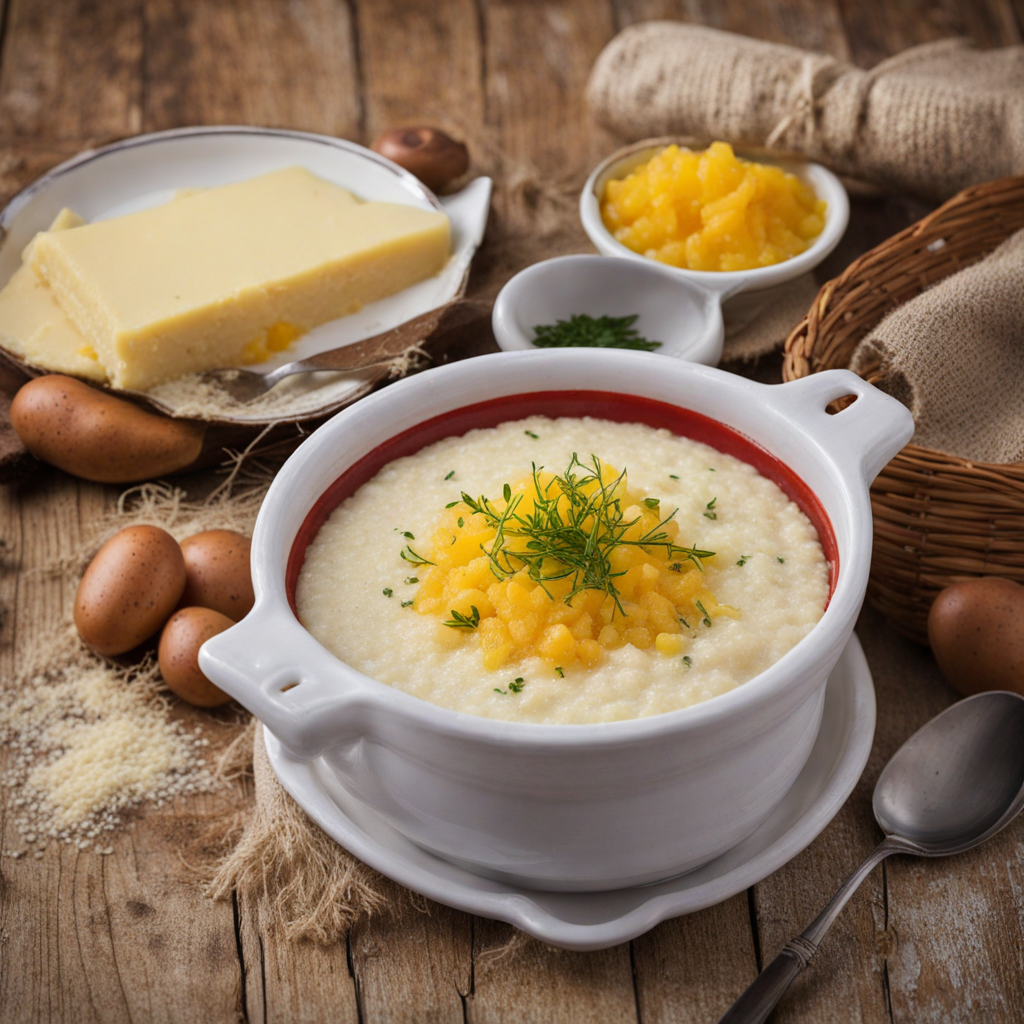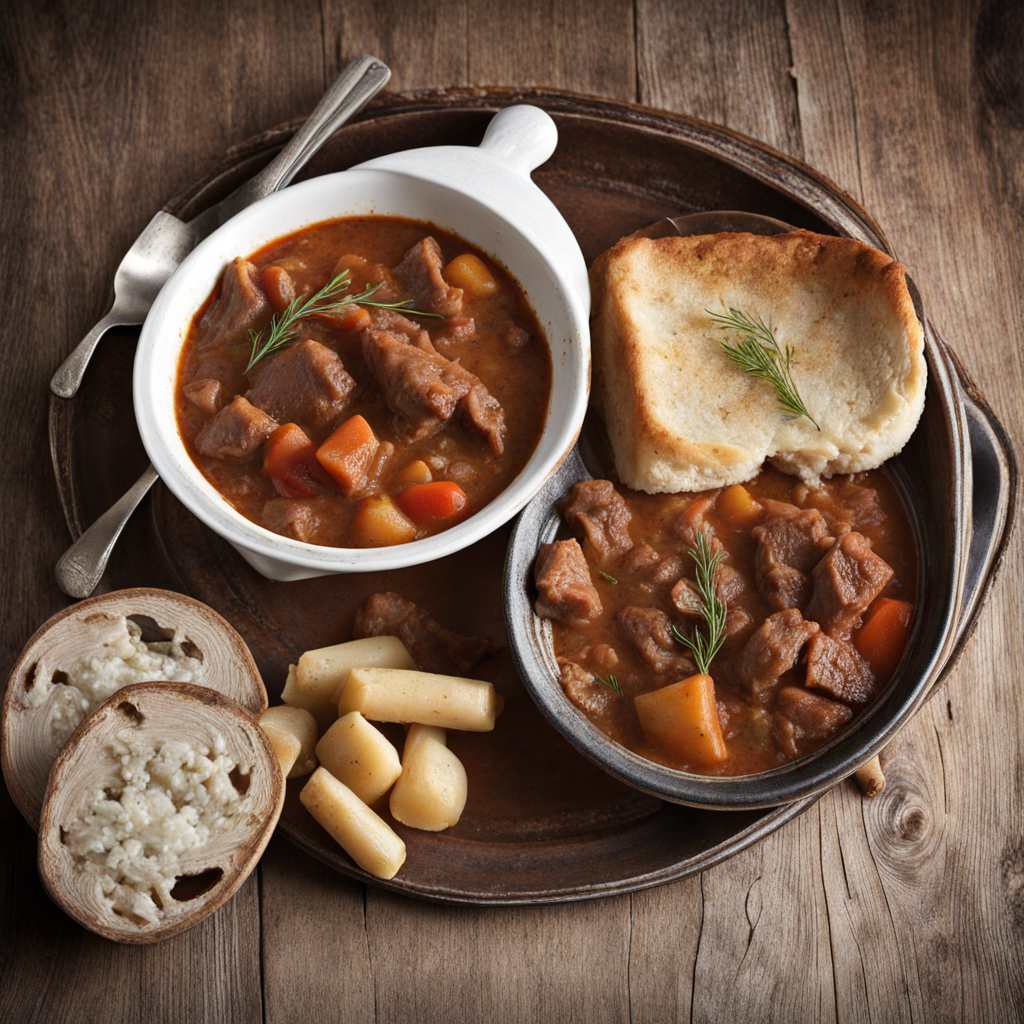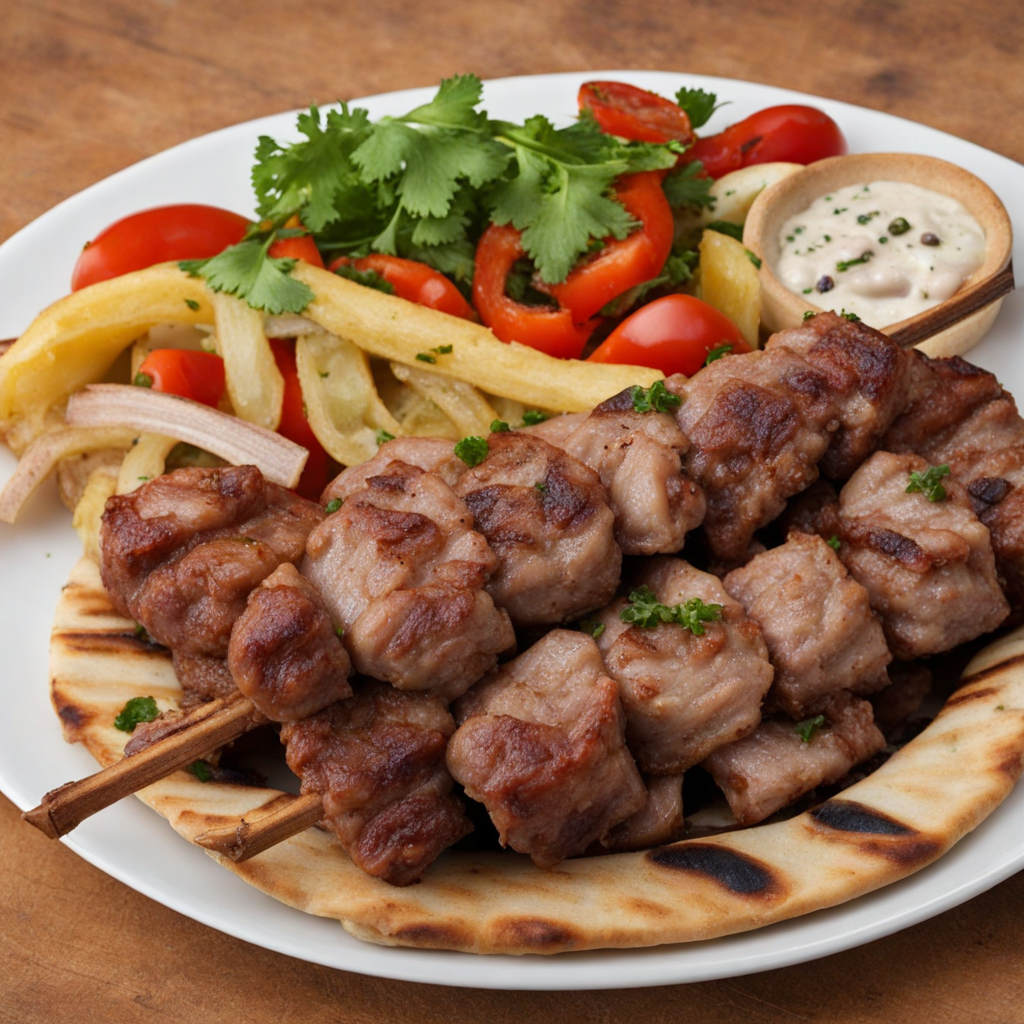Kos
Kos is a traditional dairy product from Kosovo, often described as a tangy and creamy yogurt-like substance that embodies the essence of Balkan cuisine. Made from cow's milk, sheep's milk, or a combination of both, Kos has a distinct thick consistency that makes it a versatile ingredient in various dishes. Its flavor profile is characterized by a mild sourness, which can enhance both savory and sweet dishes alike, providing a unique twist that reflects the region's agricultural heritage and culinary traditions. In Kosovo, Kos is often enjoyed as a refreshing accompaniment to meals. It pairs beautifully with fresh bread and is frequently used as a dip for vegetables or meats. Additionally, it can be drizzled over traditional dishes such as "flija" (a layered pancake) or served alongside "sarma" (cabbage rolls), adding a creamy richness that complements the flavors of these hearty meals. Its versatility extends to sweets as well, where it can be used in desserts, adding a delightful contrast to richer flavors. As you explore Kos, you'll discover not just a food, but a cultural experience that encapsulates the warmth and hospitality of the people of Kosovo. Whether you're sampling it at a local eatery or making it at home, Kos invites you to savor its distinct taste while connecting with the culinary traditions of the region. Its unique blend of flavors and textures will surely take your palate on an exciting journey.
How It Became This Dish
The History and Cultural Significance of Kos: A Culinary Treasure from Kosovo Kos, a traditional dairy product from Kosovo, is emblematic of the region's rich culinary heritage and agricultural practices. As a fermented dairy product, Kos has deep roots in the Balkans, particularly in Kosovo, where it is not only a staple food but also holds cultural significance that transcends its nutritional value. This engaging history will explore the origins, cultural importance, and evolution of Kos through the ages. #### Origins of Kos The origins of Kos can be traced back to the nomadic pastoralist communities of the Balkans, who relied on livestock for sustenance. As early as the 3rd millennium BCE, these communities began domesticating animals like cows, sheep, and goats. The practice of milk fermentation likely arose from necessity; pastoralists needed a method to preserve milk, especially during the warmer months when spoilage was a concern. The word "Kos" likely derives from the Slavic word for "curd," emphasizing its connection to the region's Slavic-speaking populations. The process of making Kos is relatively simple: fresh milk is allowed to ferment naturally with the help of beneficial bacteria, leading to a tangy, thick product that can be consumed in various ways. This method of dairy processing reflects both the ingenuity of ancient peoples and their understanding of fermentation, which was crucial for food preservation before modern refrigeration. #### Cultural Significance In Kosovo, Kos is more than just a food item; it is a symbol of the region's agricultural identity and traditions. It is often served as part of traditional meals, often alongside bread, potatoes, or as an accompaniment to meat dishes. The consumption of Kos is deeply intertwined with social customs and celebrations, appearing at family gatherings, religious holidays, and communal feasts. Kos is also significant in the context of Kosovo's diverse ethnic landscape. The region is home to various communities, including Albanians, Serbs, Bosniaks, and others. Each ethnic group has its unique traditions surrounding the production and consumption of Kos, yet the product serves as a unifying element in the local diet. It showcases the shared agricultural practices that have been passed down through generations, fostering a sense of community and continuity. In traditional households, Kos is often made by women, who have historically been the primary caretakers of dairy animals. This role underscores the importance of women in preserving culinary traditions and passing them on to younger generations. The preparation of Kos can be a communal activity, with families gathering to make the product, reinforcing family bonds and cultural identity. #### Development Over Time As Kosovo's history has unfolded, so too has the production and consumption of Kos. The Ottoman Empire, which ruled the region for several centuries, introduced new agricultural techniques and influenced local cuisine. Dairy products like Kos were integrated into the wider Ottoman culinary repertoire, leading to variations in its preparation and usage. The Ottomans valued dairy for its nutritional benefits, and Kos became a staple in households across the empire. During the 20th century, Kosovo faced significant political and social upheaval, particularly during the Yugoslav Wars of the 1990s. Despite these challenges, the production of Kos remained resilient. Many families continued to rely on traditional methods of dairy processing as a means of sustenance during times of scarcity. The ability to produce Kos from their livestock not only provided nourishment but also served as a source of cultural pride and continuity amid turmoil. In contemporary Kosovo, Kos has undergone a renaissance. With the rise of interest in traditional and artisanal foods, Kos is being re-evaluated for its nutritional benefits and culinary versatility. Health-conscious consumers are drawn to its probiotic qualities, recognizing its potential for gut health and overall well-being. Markets in Kosovo are increasingly filled with local producers selling homemade Kos, catering to a growing demand for authentic, locally-sourced food products. Additionally, the globalization of food culture has introduced Kos to a wider audience. As Kosovars migrate and establish communities abroad, they bring their culinary traditions with them. Kos is now featured in international cuisine, celebrated for its unique flavor and health benefits. It has found a place in gourmet restaurants, health food stores, and even mainstream grocery outlets, transforming it from a traditional staple to a contemporary culinary trend. #### Kos in the Modern Era Today, Kos is not only a beloved food item in Kosovo but also a point of cultural pride. Various festivals and events celebrate local food, emphasizing the importance of preserving culinary heritage. Workshops and tours focused on traditional dairy production are becoming popular, allowing both locals and tourists to engage with Kosovo's rich agricultural traditions. Moreover, the recognition of Kos as a traditional food product has sparked interest in its potential for export. Efforts are underway to promote Kos beyond Kosovo's borders, capitalizing on the growing trend toward natural and fermented foods worldwide. This trend aligns with broader movements that celebrate local, sustainable food systems, highlighting the importance of supporting small-scale farmers and traditional practices. Kos has become a symbol of resilience, adaptability, and cultural heritage for the people of Kosovo. Its journey from a simple fermented dairy product to a contemporary culinary sensation reflects the region's complex history and the enduring significance of food in shaping identity. #### Conclusion The story of Kos is one of tradition, community, and resilience. From its ancient origins as a method of preserving milk to its modern-day status as a celebrated delicacy, Kos embodies the spirit of Kosovo's agricultural and culinary heritage. As the world continues to globalize, Kos serves as a reminder of the importance of preserving local traditions and embracing the rich tapestry of cultural identities that define our culinary landscape. As we savor this remarkable product, we not only enjoy its unique flavor but also partake in a history that is as rich and layered as the food itself.
You may like
Discover local flavors from Kosovo







